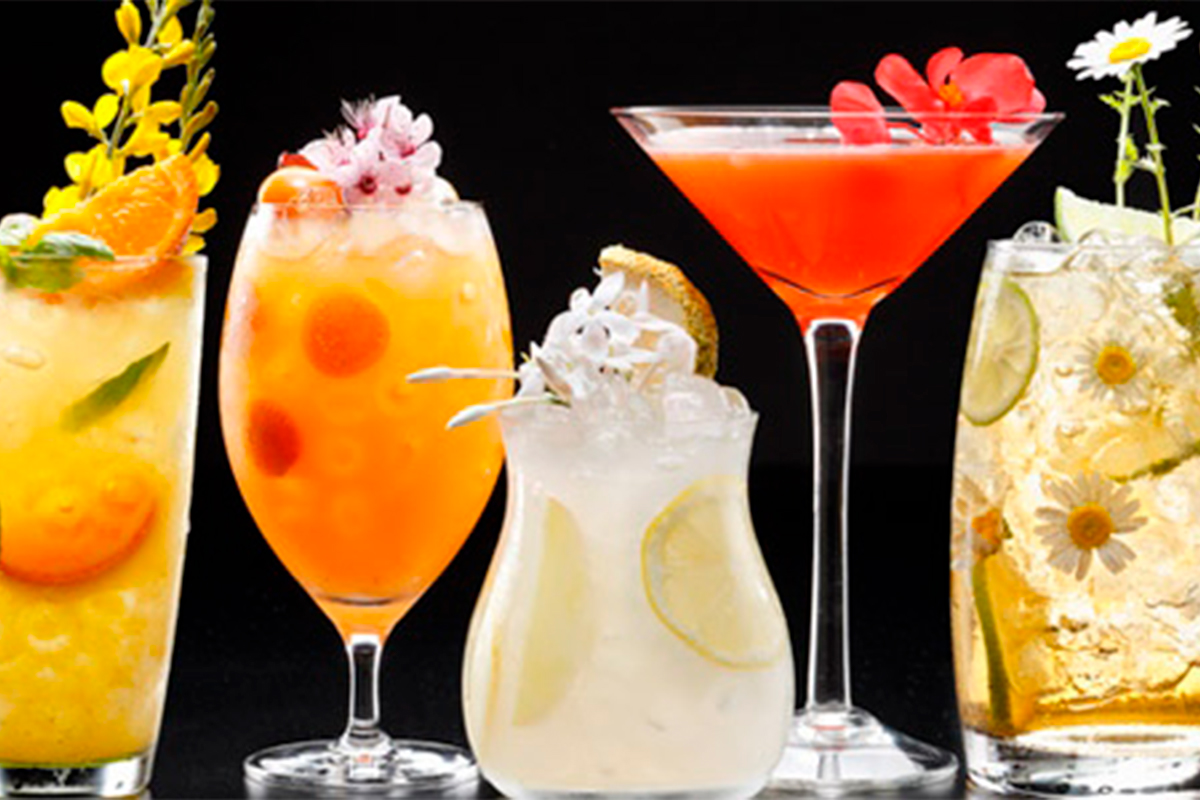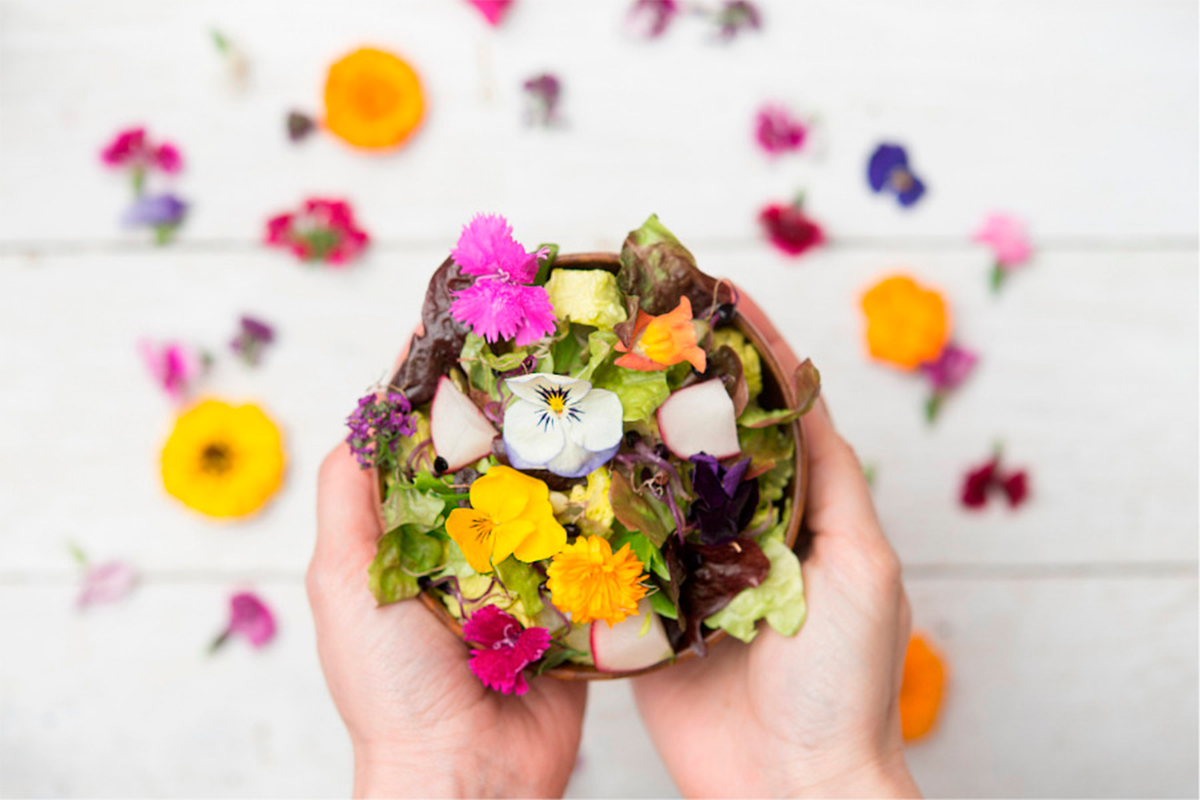
Edible flowers have become a trend in modern cocktail making and cooking. Although they are not something new but have been around since ancient times, their vibrant colors and organic shapes have brought them back into the public eye, as they give dishes and drinks a refreshing aesthetic, as well as unique and delicious flavors and aromas that make the tasting a complete sensory experience.
Today, we want to share with you some very creative ways to include them in your recipes, to create delicacies with a special essence worthy of a gourmet photograph.

There are three basic ways to add edible flowers to your drinks:
In infusions. Just like how teas are prepared, the way to infuse the flowers is by steeping them in hot water. In this case, it is best to use dehydrated flowers, since this way they will not lose liquid in the process and the flavor will be strong and easily recognizable. You should also be careful that the water temperatures are not too high, otherwise, the aroma and integrity of the flower could be lost.
Some perfect flowers for this type of preparation are roselle, chamomile, and jasmine. To accompany, with a little gin, a good sparkling wine, or a touch of mezcal is more than enough.
As decoration. This is the most common way of using edible flowers, as they not only transform the drink visually but also add a unique texture that separates it from other similar ones, almost like tapioca to bubble tea.
Violets, orchids, lavender, or rose petals are perfect for this presentation.
In syrups and macerations. These preparations require a little more knowledge in the kitchen, but don’t worry, we’ll tell you the most important things to start with.
To make a syrup, you must put the fresh flowers in equal parts of water and sugar, preparing them with heat. On the other hand, the macerations consist of the extraction of certain properties of the edible flowers, within an alcoholic medium.
In both cases, the result is a delight. We recommend trying it with roselle, pansies, and violets.

There is a wide variety of edible flowers, but some of the most common are orchids, nasturtiums, calendula, the well-known pumpkin flower, lavender, jasmine, and roses. Each of them has unique properties, such as a high amount of antioxidants or even positive health effects, such as relaxing and anti-stress properties.
Really, edible flowers are an excellent resource to include in your preparations, whether you are entering the world of gastronomy and mixology or if you have been in it for many years. If you are brave enough to try them, you will keep finding more and more ways to use them, combining them with multiple ingredients and in various presentations.
So, what do you say? Are you in?
